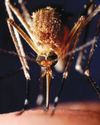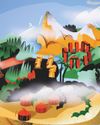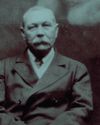Of all the changes to sweep the west over the past 400 years, perhaps none have had a greater impact on women’s lives than the fall in family sizes. Sarah Knott tells the story of the great fertility decline, from the large broods of 17th-century America to the one-children families of postwar London
How I shall get along when I have got half a dozen or 10 children, I can’t devise,” fretted the New Jersey colonist Esther Edwards Burr after her child’s birth in 1756. Narcissa Whitman, a pioneer in Oregon a century later, might have recognised these concerns. She knew first-hand the consequences of mothering a large brood. “My dear parents,” she wrote in a rare but affectionate missive back to New York in 1845, “I have now a family of 11 children. This makes me feel as if I could not write a letter.”
Modern demographers know that, over the past 400 years, fertility rates have changed significantly in Europe and North America. The numbers dropped dramatically from an average of seven or eight children among settlers in 17th and 18th-century North America, or four or five in Britain, to 2.2 or lower in both places in the 20th century. The demographers culled and amassed their numbers mainly from sources including local censuses, family histories, wills, church records, and then, since the 19th century, from national surveys. They call this remarkable historical transformation the fertility transition.
Of all the factors affecting women’s experiences of motherhood since the 17th century, surely none has had a greater impact than plunging fertility rates. If there is an overarching story to be told about mothering, the change from larger to smaller families is as close as we might get.
But understanding what these changes may have felt like is tricky. It wasn’t easy for a mother to keep a diary or to write a letter – thus leaving a record for us to read now – when there were “half a dozen or 10 children” on hand. Perhaps that is why the history of the fertility transition has, for the most part, faded from view.
この記事は BBC Earth の July - August 2019 版に掲載されています。
7 日間の Magzter GOLD 無料トライアルを開始して、何千もの厳選されたプレミアム ストーリー、9,000 以上の雑誌や新聞にアクセスしてください。
すでに購読者です ? サインイン
この記事は BBC Earth の July - August 2019 版に掲載されています。
7 日間の Magzter GOLD 無料トライアルを開始して、何千もの厳選されたプレミアム ストーリー、9,000 以上の雑誌や新聞にアクセスしてください。
すでに購読者です? サインイン

World's First Malaria Vaccine
The World Health Organization’s director-general hails ‘historic moment’ as mass immunisation of African children begins

Is River Pollution Putting The Species In Jeopardy Again?
Ten years ago, it was jubilantly announced that o ers had returned to every county in England. But is river pollution putting the species in jeopardy again?

The Big Burnout
Long hours, low pay and a lack of appreciation — among other things — can make for a stressful workplace and lead to burnout. It’s something we should all be concerned about, because over half of the workforce reports feeling it

Putting Nature To Rights
More countries are enshrining the right to a clean environment into law. So if a company or government is impinging upon that right, you could take them to court

Mega Spaceship: Is It Possible For China To Build A Kilometre-Long Spacecraft?
Buoyed on by its successful Moon missions, China has launched a five-year study to investigate the possibility of building the biggest-ever spacecraft

Are We Getting Happier?
Enjoying more good days than bad? Feel like that bounce in your step’s getting bigger? HELEN RUSSELL looks into whether we’re all feeling more cheery…

“Unless the Japanese got the US off their backs in the Pacific, they believed they would face complete destruction”
Eighty years ago Japan’s surprise raid on Pearl Harbor forced the US offthe fence and into the Second World War. Ellie Cawthorne is making a new HistoryExtra podcast series about the attack, and she spoke to Christopher Harding about the long roots of Japan’s disastrous decision

Your Mysterious Brain
Science has mapped the surface of Mars and translated the code for life. By comparison, we know next to nothing about what’s between our ears. Over the next few pages, we ask leading scientists to answer some of the most important questions about our brains…

Why Do We Fall In Love?
Is it companionship, procreation or something more? DR ANNA MACHIN reveals what makes us so willing to become targets for Cupid’s arrow

Detecting the dead
Following personal tragedy, the creator of that most rational of literary figures, Sherlock Holmes, developed an obsession with spiritualism. Fiona Snailham and Anna Maria Barry explore the supernatural interests of Sir Arthur Conan Doyle